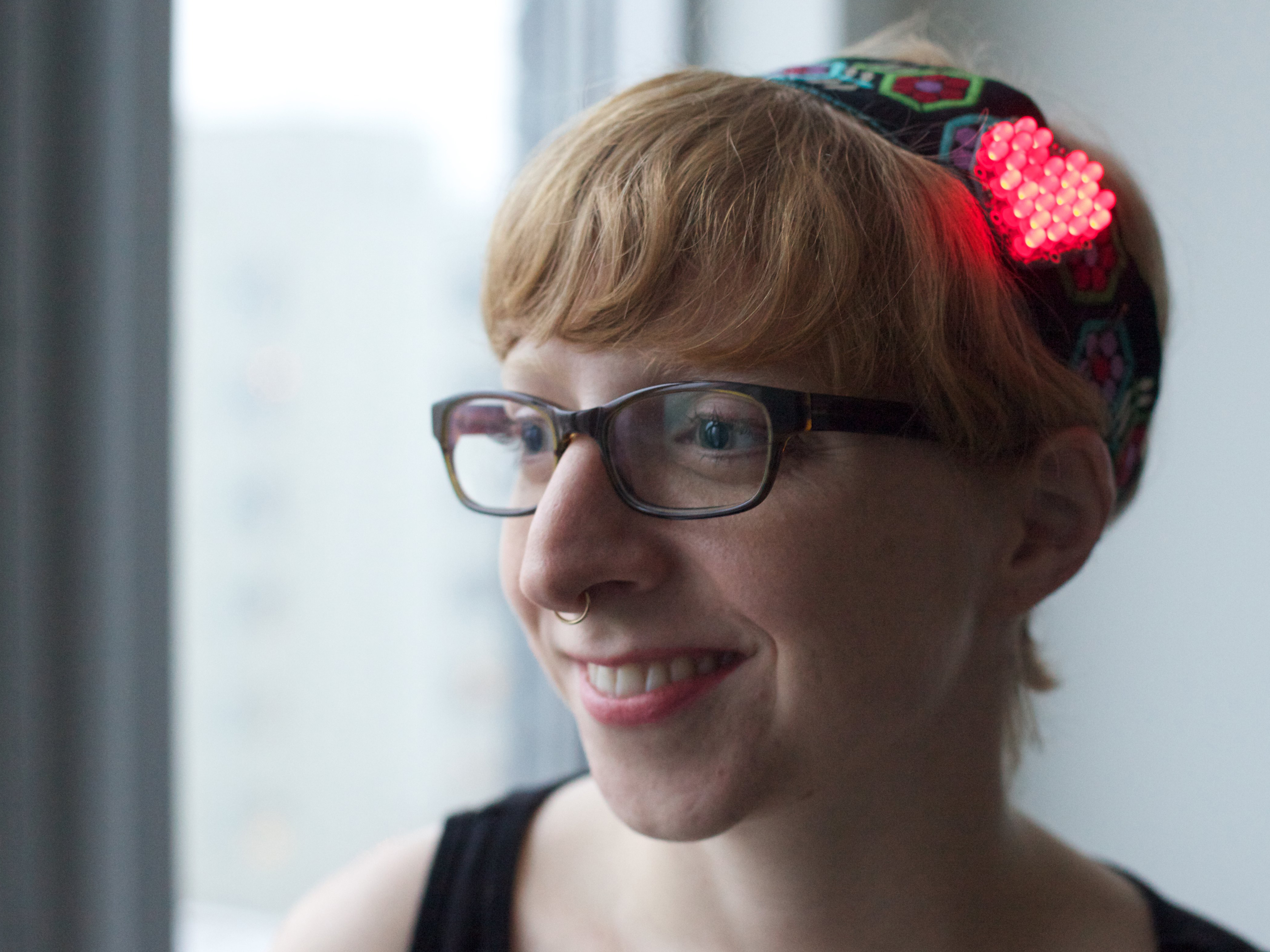This project is a collaboration with Jimmie Rodgers. Build a pulse-sensing headband that flashes a heart-shaped LED display to the beating of your heart! Uses a scratch-built perf board Arduino built from Mintduino parts, the Open Heart LED display, Yury and Joel’s pulse sensor, and a rechargeable lithium battery and power board. The circuit is built into a brocade headband with elastic at the back.




